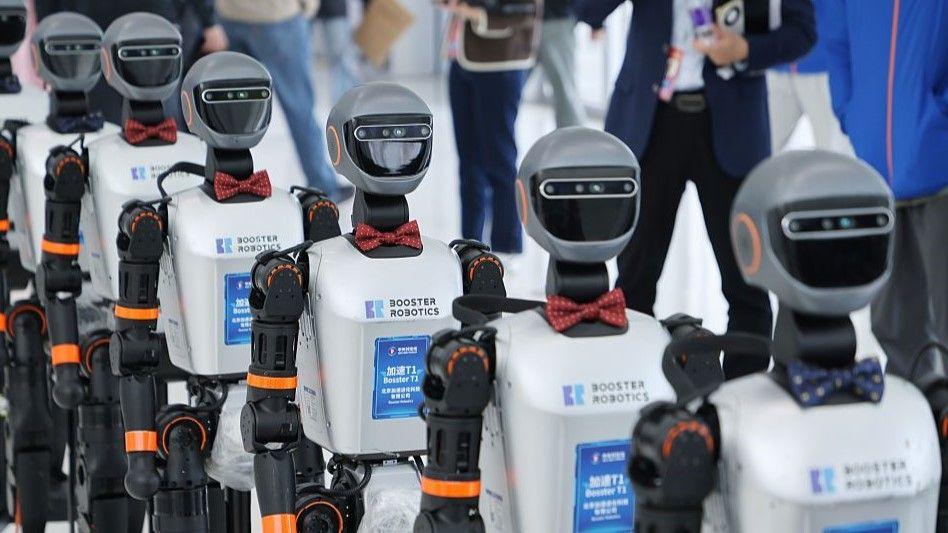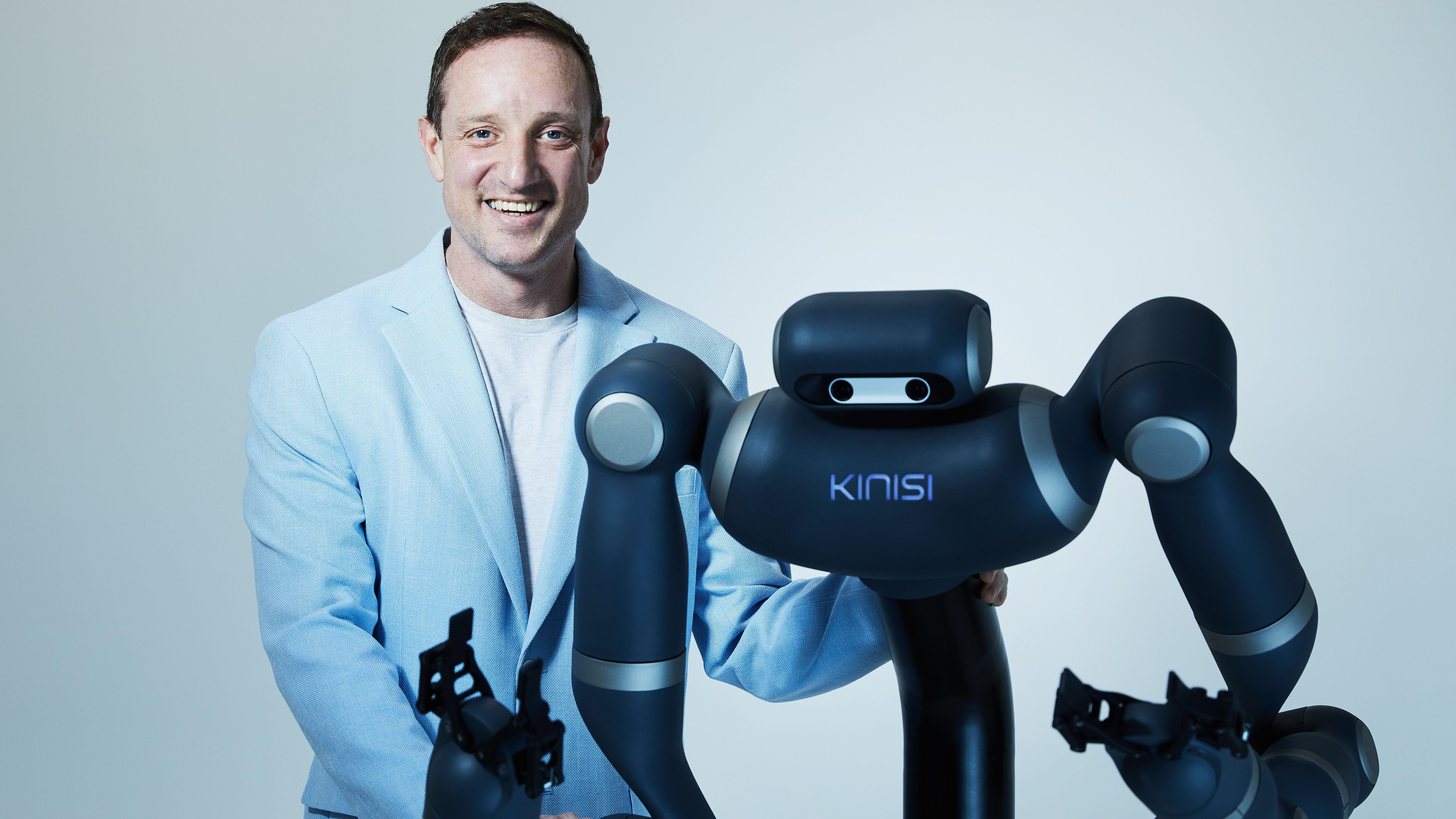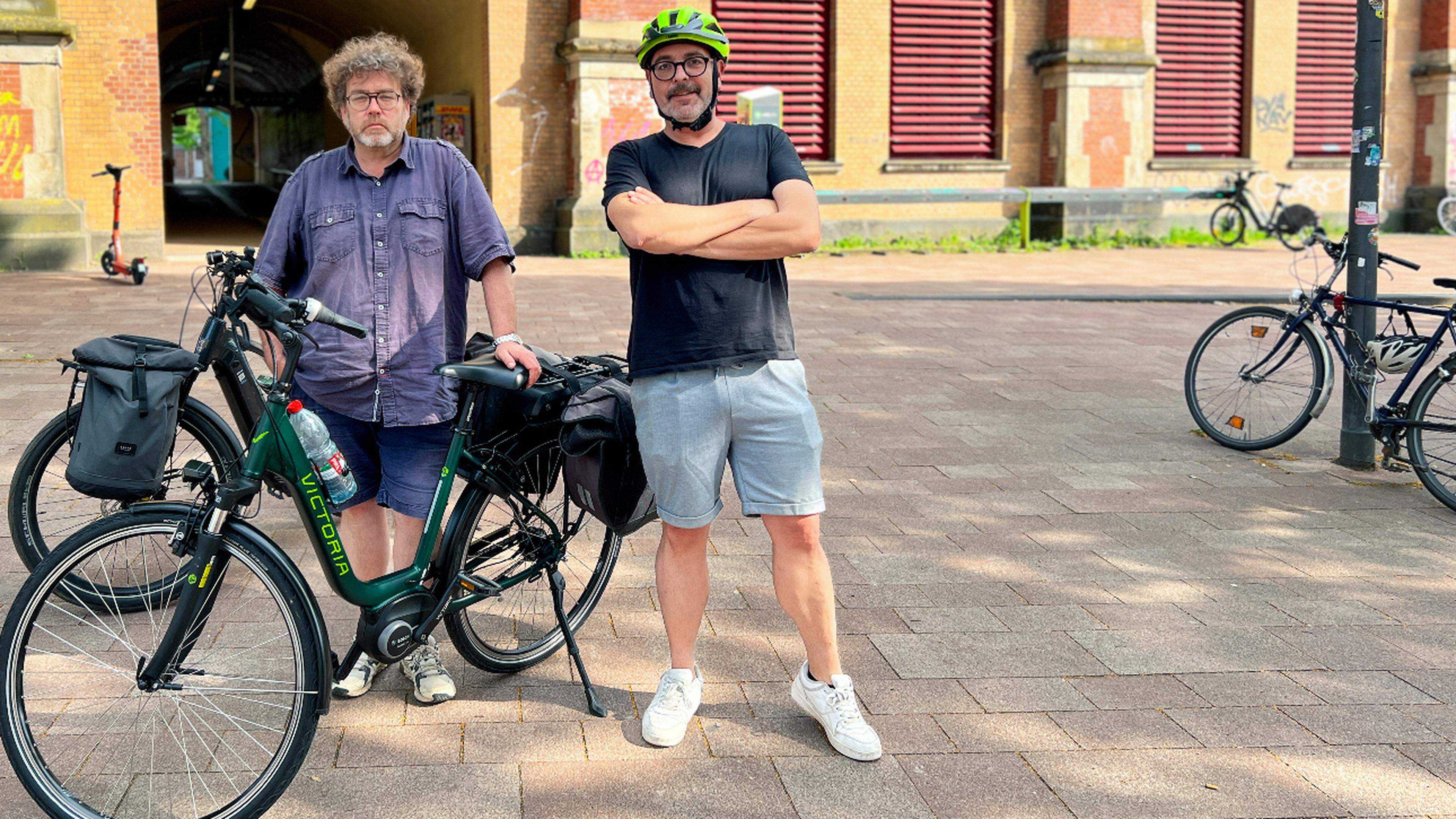Who will win the humanoid race – BBC News in Serbian

It is bright spring morning in Hanover, in Germany, and I am on the way to get acquainted with the robot.
I was called to see the G1, the humanoid robot made by the Chinese company Unitra, in Hanover Mesa, one of the largest fairs in this area.
About 130 centimeters high, G1 is smaller and more accessible than others from humanoid robots on the market and has so much fluid movement range and skills that shots are dancing and He deals with martial arts became viral.
Today, remotely with G1 manages Pedro Jeng, sales manager in Unitrus.
It explains that customers must program each G1 themselves for autonomous functions.
The passers-by stop and actively try to communicate with G1, which cannot be said for many other machines exposed in the Cave-like conference hall.
They provide their hands to handle it, make sudden movements to see if they will react, they laugh when the G1 waved or flexed backwards, they apologize if they run into it.
There is something in his human form that, as spooky as it was, relaxes people.
Unitra is one of the tens of companies around the world that make robots in human form.
The potential is huge – for companies it promises the work strength to which holidays or raises do not need.
It can also be the ultimate household appliance.
After all, who would not want a machine that can wash the laundry and fill the dishwasher.
But technology is still far from the finish line.
Although robotic arms and mobile robots have been common in factories and warehouses for decades, conditions at these workplaces can be controlled and workers can remain safe.
The introduction of a humanoid robot in less predictable environments, such as a restaurant or private home, is a much bigger problem.
To be useful, humanoid robots must be strong, but it also makes them potentially dangerous – if it is simply overturned in the wrong moment that can endanger someone.
And that’s why a lot has yet to be done on artificial intelligence that would control one such machine.
« Artificial intelligence has not yet reached that turning point, » says Spokesman Unitri for the BBC.
« For today’s robotic artificial intelligence, basic logic and reasoning – such as understanding and completing complex tasks – represent a great challenge, » they say.
At this point, the G1 is placed for research institutions and technological companies, which can use Unitri’s open source system for development.
_______________
See this story: Belgrade fist – First bijanica fist for use in medicine and science
For now, entrepreneurs direct all their efforts to humanoid robots for warehouses and factories.
The most famous among them is the Ilon Musk.
His car manufacturing company Tesla makes a humanoid robot named Optimus.
In January he said That these years will be made by « several thousand » and expects them to do « useful things » in Tesla’s factories.
Other car manufacturers went similar.
BMV recently introduced humanoid robots to the American factory.
Meanwhile, South Korean Automotive Company Hyundai ordered tens of thousands of boston dajnemiks robotsRobotic firms bought by 2021. years.
Tomas Anderson, the founder of the Research Company Stick, monitors 49 companies that make humanoid robots – those with two hands and two legs.
If you expand the definition on two-handed robots, but which stand on wheels, then studies more than 100.
Anderson thinks it is most likely to dominate the Chinese firms.
« Supply chain and the entire robotry ecosystem are huge in China, and it is very easy to do the development of development and research and manufacture, » he says.
Unitters underline that advantage – his G1 is cheap (for one robot) with a $ 16,000 advertised price.
Also, Anderson points out, investors favor Asian countries.
In the recent Stick Report, it stands out That almost 60 percent of humanoid robots were collected in Asia, while the United States managed to attract most of the rest.
Chinese companies have additional advantage of support from national and local governments.
For example, in Shanghai there is a robot training plant enjoying state supportwhere dozens of humanoid robots are learning to end the tasks.

How, so, the American and the European market can compete with that?
Bristol Craft Craft Bren Pierce was funded by three robotics companies, and the latest Kinisi has just launched the Robot Kr1.
And while the robot is designed and completed in the UK, he will be made in Asia.
« The problem you have as a European or American company is that you must, first, to buy all these sub-components from China.
« And then it becomes stupid to buy engines, batteries, resistors, transfer them to the other end of the world to compose them there when you can put them on the source itself, and that is Asia. »
In addition to producing its own robots in Asia, PIRS lowers the price by not trying to achieve their full humanoid form.
Made for warehouses and factories, KR1 has no legs.
« All those places have flat floors. Why would you like an extra cost of a very complex form of shape when you can only place it on the mobile basis? » He asks himself.
Wherever possible, its KR1 was made with mass-produced components – wheels are the same as you would find them on an electrical scooter.
« My philosophy is to buy as much selling things as possible. So all our engines, batteries, computers, cameras, are all commercially available, mass-produced parts, » he says.
Like his competitors in Unitrus, Pierce says it is a real « secret ingredient » software that allows the robot to work with people.
« Many companies get high-tech robots, but then you need a doctor robotics that you can actually install it and use it.
« What we are trying to make is a robot that is very easy to use, where your average storage or factory worker can actually learn how to use it in a couple of hours, » Pierce says.
He says that KR1 can perform the task after the man was conducted through him 20 to 30 times.
KR1 will get trial customers this year to test it.

Will Robots ever come out of the factories and switch to homes?
Even optimistic pierce says it’s still far.
« My long-term dream last 20 years was to make a robot for everything. I did a doctorate on it, and I really think it’s the ultimate goal, but it’s a very complicated task, » says Pierce.
« I still think that will eventually be achieved, but I think we need for at least 10 to 15 years to that. »
_______
See also Video of the first robot of Dj Jeja in the Balkans:
The BBC in Serbian is from now on and on the morning, follow us Here.
Follow us on Facebook, Twitter, Instagram and Vajiberu. If you have a topic suggestion for us please contact (Email Protected)








:format(webp)/s3/static.nrc.nl/wp-content/uploads/2024/10/23100921/data123300162-291e87.jpg)